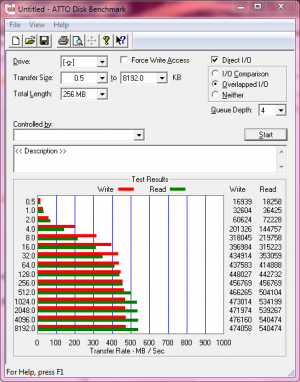Just when you thought you had it all figured out…
When SSDs started becoming viable alternatives to mechanical storage, a whole new cast of characters started popping up in the storage arena. It used to be that there were a short list of names for your storage choices, but that list is a lot longer now that companies with electronic assembly expertise and capacity are able to develop SSDs.
We live in a time of many choices for storage, but one name you may not be completely familiar with yet is Taiwan-based ADATA.
Now I’ll admit that I fell into the group of people who weren’t familiar with the name. ADATA got onto my radar because they agreed to sponsor Expo Icrontic with some giveaways and door prizes, and one of the things they sent along was their SX900 SSD. Curiousity got the better of me, and I opened it to write this review before I box it back up and give it away during Expo.
The SX900 is their top-of-the-line family of SSDs from ADATA. It’s an MLC drive based on the LSI SandForce 2281 controller, a controversial one because of early firmware issues. Some people have a bad taste in their mouth from the LSI SandForce 2281 issues, but those issues have been ironed out for some time now, and there are quite a few drives based on this controller. One of the things that LSI has done with the latest LSI SandForce 2281 firmware has been to give drive manufacturers some flexibility and control over two key technologies: RAISE (an LSI SandForce-specific error checking and correcting technology) and OP (over-provisioning). ADATA has taken these new tools to tweak the usable capacity so that buyers are indeed getting a true 64gb, 128gb, 256gb, etc. on their drives rather than the usual 60, 120, 240, and so on.
The provisioning problem
To understand why this is a big deal, it’s important understand over-provisioning. Most LSI SandForce-based SSDs allocate around 7% of the NAND for over-provisioning. This manifests as drives with 120gb capacities, even though they have 128gb of NAND installed in them, and so on. LSI decided to tackle this, and so released firmware that allows manufacturers to modify the over-provisioning allowances. ADATA was first out of the gate to take advantage of the new firmware, and over-provisioned the SX900 exactly 0%. The question is, then, does this introduce a performance hit? After all, over-provisioning was designed to increase performance by offering space to help decrease write amplification on SSDs.
ADATA says no, and shipped this drive to prove their point.
SX900 Specs
The drive comes in four capacities: 64gb, 128gb, 256gb, and 512gb. The first three are listed as max 550mb/s reads, while the 512gb maxes out at 540mb/s. As mentioned previously, these are MLC drives based on the LSI LSI SandForce 2281, which has a SATA3 6gb/s interface.
The package includes a 3.5″ mounting bracket that is blue anodized aluminum with the ADATA logo on it, as well as a full license of Acronis TrueImage HD, which is a nice value add. On top of that, they support the drive with a full three year warranty.
Benchmarks
The test bench system is a Gigabyte GA-890FXA-UD5 v2 motherboard with an AMD Phenom II X6 1100T CPU, running Windows 7 64bit.
ATTO shows the drive pushing close to the listed maximums for the drive. ATTO is a synthetic, best-case-scenario benchmark that shows sequential, highly compressible data:
CrystalDiskMark 3 is a little more brutal on SSDs because it’s more real life; it’s not easily compressible data, and thus represents slightly more realistic scenarios:
As you can see, the SX900 stacks up pretty much on par with other LSI SandForce 2281-based drives, such as the Mercury Electra 6G, the Patriot Pyro, and the OCZ Vertex 3.
Value
 So really, the purchase decision comes down to one of value: The drive is similarly priced to its competitors (well, slightly lower on the 120gb and up drives), but you’re getting more capacity than you are with any of the competition. If you toss in the added value of the Acronis TrueImage license, the value proposition is quite in ADATA’s favor.
So really, the purchase decision comes down to one of value: The drive is similarly priced to its competitors (well, slightly lower on the 120gb and up drives), but you’re getting more capacity than you are with any of the competition. If you toss in the added value of the Acronis TrueImage license, the value proposition is quite in ADATA’s favor.
The drive is currently available for $89.99 for 64gb, $159.99 for 128gb, $299.99 for 256gb, and $609.99 for 512gb, all on Newegg.
Based on the solid performance numbers, the additional capacity, and the software pack-in, we’re happy to award the ADATA SX900 SSD our Icrontic Stamp of Approval as a product we recommend. If you want to win this drive, come to Expo Icrontic 2012 for a shot at it!









 Articles RSS
Articles RSS